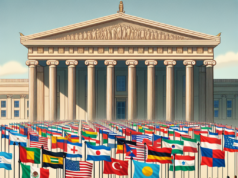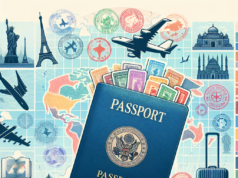In a significant move that has sent ripples through the immigration landscape, recent adjustments to visa programs have been unveiled, prompting both concern and curiosity among immigrants and international travelers. These changes, which aim to streamline processes and address evolving global dynamics, have far-reaching implications for individuals and employers alike. This article delves into the key aspects of these adjustments, their impacts, and what stakeholders need to know moving forward.
Understanding the Recent Visa Program Adjustments: An Overview of Key Changes
The latest adjustments to visa programs have introduced a series of critical changes designed to enhance efficiency and security within the immigration system. Among the most notable alterations are the revised application procedures, which now incorporate advanced technology for processing and tracking applications. Additionally, certain visa categories have seen modifications in their eligibility requirements, reflecting a shift towards prioritizing skills and qualifications that align with current labor market demands. These changes are part of a broader strategy to modernize the immigration framework, ensuring it remains responsive to both domestic needs and international trends.
Impacts of Visa Program Changes on Immigrants and International Travelers
The recent visa program changes are poised to have profound effects on immigrants and international travelers. For many, the new eligibility criteria may present additional hurdles, particularly for those who previously qualified under more lenient standards. This could lead to increased uncertainty and anxiety among potential applicants, as they navigate the complexities of the revised system. Conversely, the streamlined application process may benefit those who meet the updated requirements, potentially reducing wait times and expediting travel plans. Overall, the adjustments are likely to create a mixed landscape of opportunities and challenges for individuals seeking to enter or remain in the country.
Detailed Breakdown of New Eligibility Criteria for Visa Applicants
The new eligibility criteria for visa applicants have been meticulously crafted to reflect the changing needs of the economy and society. Key changes include a heightened emphasis on educational qualifications, professional experience, and language proficiency. For instance, certain work visas now require applicants to possess specific certifications or degrees that align with in-demand occupations. Additionally, there are stricter guidelines regarding sponsorship, with employers now required to demonstrate a genuine need for foreign workers. These criteria aim to ensure that visa recipients contribute positively to the labor market while also safeguarding domestic employment opportunities.
Navigating the Application Process: What You Need to Know About Updates
As the visa application process undergoes significant revisions, applicants must familiarize themselves with the new protocols to avoid potential pitfalls. The introduction of digital platforms for application submission and tracking is a major shift, necessitating that applicants possess a certain level of technological proficiency. Furthermore, applicants should be prepared for potential delays as the system adjusts to the influx of new submissions under the revised criteria. It is advisable for individuals to consult official resources and, if necessary, seek legal assistance to ensure compliance with the updated requirements and to enhance their chances of a successful application.
Expert Insights: How Visa Program Changes Affect Employers and Workforce Dynamics
The adjustments to visa programs are not only impacting individual applicants but also have significant implications for employers and workforce dynamics. Experts suggest that these changes may lead to a more competitive labor market, as companies will need to adapt their hiring practices to align with the new eligibility standards. Employers may find it increasingly challenging to source talent from abroad, particularly in sectors facing labor shortages. This could prompt businesses to invest more in training and development for domestic workers, thereby reshaping workforce strategies. Additionally, companies may need to reassess their sponsorship processes to ensure compliance with the new regulations, which could involve additional administrative burdens.
Future Implications: What the Adjustments Mean for Global Mobility and Immigration Policy
Looking ahead, the recent visa program adjustments signal a pivotal moment for global mobility and immigration policy. As countries around the world grapple with similar challenges, these changes may influence international norms and practices regarding immigration. The emphasis on skills and qualifications could lead to a more merit-based approach to immigration, potentially reshaping the demographics of incoming populations. Furthermore, as nations compete for talent in an increasingly interconnected world, the effectiveness of these visa programs will be closely monitored. Policymakers will need to remain agile, adapting to the evolving landscape of global labor markets while balancing the needs of domestic constituents.
In conclusion, the recent adjustments to visa programs represent a significant shift in immigration policy, with implications that extend beyond individual applicants to encompass employers and the broader economy. As stakeholders navigate these changes, it is crucial to stay informed and proactive in adapting to the new landscape. The evolving nature of global mobility underscores the importance of a responsive and equitable immigration system that meets the needs of all parties involved. As we move forward, ongoing dialogue and collaboration will be essential in shaping a future that balances opportunity with responsibility.




























